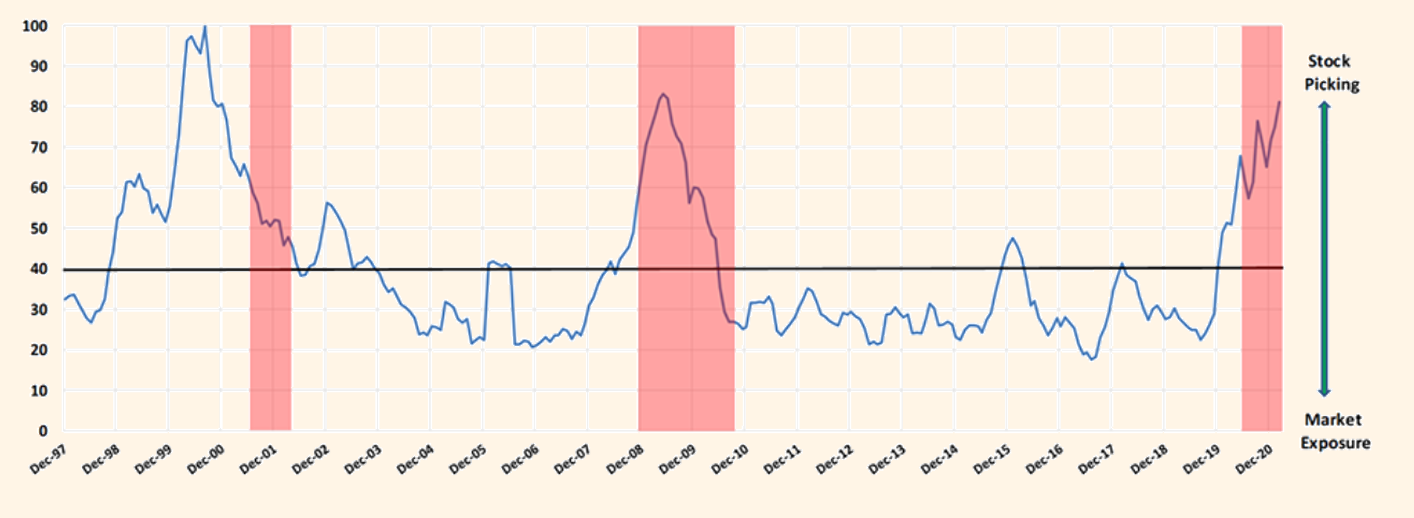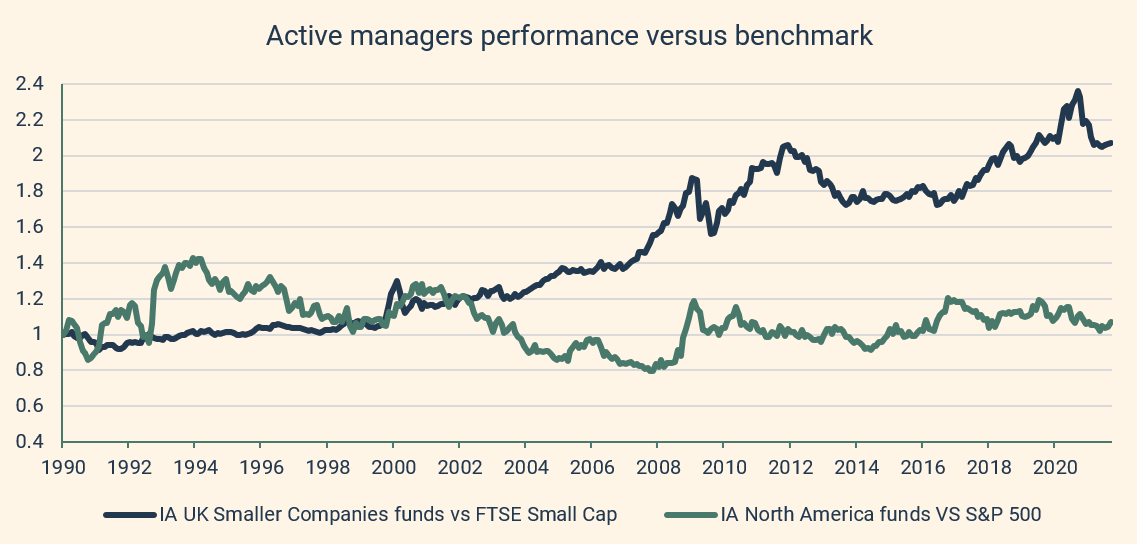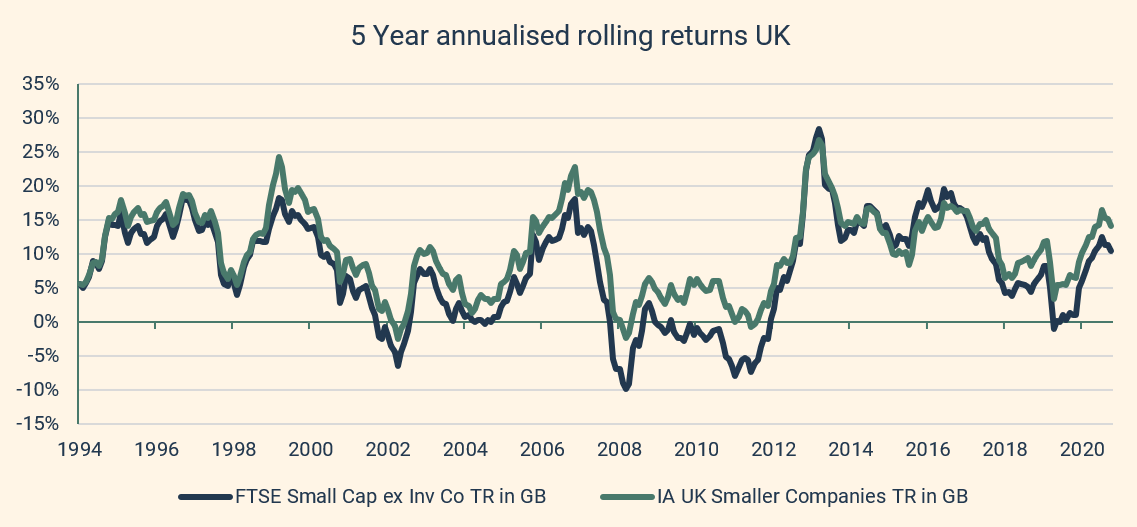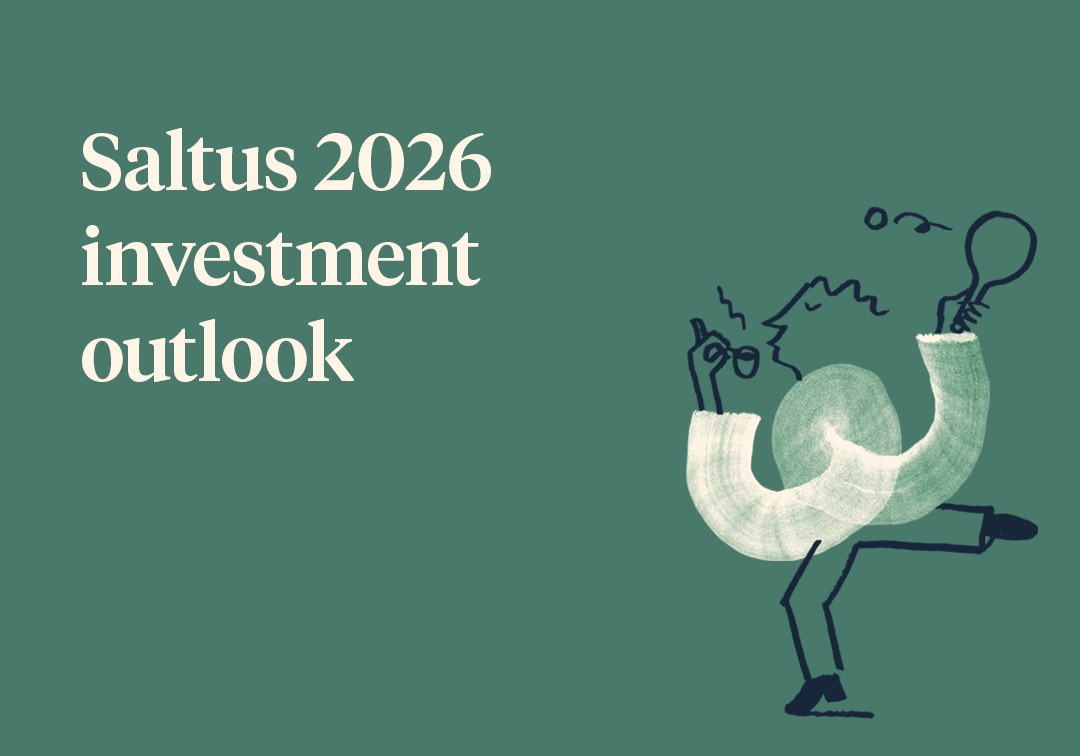Active
adjective
ac·tive | \ ˈak-tiv
Used to emphasise that someone is taking action in order to achieve something, rather than just hoping for it or achieving it in an indirect way.
Passive
adjective
pas·sive | \ ˈpa-siv
Accepting or allowing what happens or what others do, without active response or resistance.
The debate surrounding active versus passive investing has been raging for several decades and remains one of the more divisive issues in the investment industry. Each side of the argument has plenty of evidence to cite for its superiority, and when formulating an investment strategy, it is a consideration that investors cannot ignore.
Recent punditry has been quick to write off active management, given the strong performance of the past few years of some passive instruments. However, just because one style of investing has come into favour, it does not necessarily mean it is superior. Recency bias is the tendency to believe that more recently observed patterns will continue. Investors who only consider recent past performance might be missing the wood for the trees.
In basic terms, defining active or passive investing is straightforward: active investors attempt to outperform the returns of a specific benchmark, whereas passive investors accept the market return by tracking a specific market index. The positives and negatives of this simplistic view are easy to represent:
The case for active management:
- The opportunity to outperform the market
- Flexibility is inherent so that the fund can be closely tied to the investor’s objectives
- Risk management is built-in through this flexibility (ability to avoid sectors/regions/styles)
The case against active management:
- Performance depends on the ‘skill’ of the manager
- Higher costs lead to a lower probability of outperformance(Vanguard, n.d.)
- Key person risks
The case for passive management:
- Management fees are low with passive managers, giving a higher chance of performance
- You get the outcome you expect: the return of the market you are tracking (plus or minus a small tracking error)
- No key person risks
The case against passive management:
- No chance of outperformance
- Index tracking doesn’t pay attention to fundamentals, valuations, or the stage in the company’s growth cycle
- Investors in passive instruments can be herded into overbought asset classes/sectors
- Asset allocation can’t be passive
In practice, this is made harder by the final point, that asset allocation can’t be passive. Someone must decide the mix of assets: what investments do you want to passively track exactly? Do you want to track one market or several? If more than one, how much are you putting into each, and when do you rebalance the portfolio? Adjusting a portfolio to an investor’s objective is key to reaching financial goals, and by investing into anything from cash, an active decision must be made. The route you go down when selecting the investments is the tough choice, but by using a robust, rigorous, and repeatable approach to both portfolio construction and fund selection you can mitigate some of the challenges.







